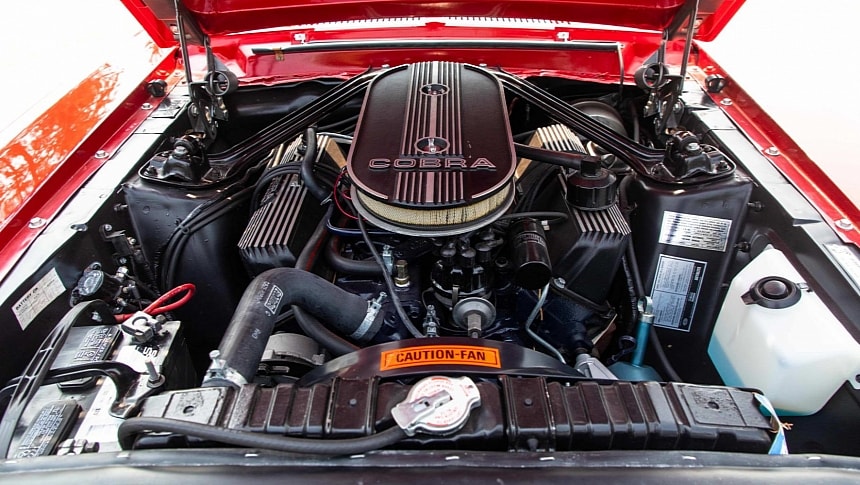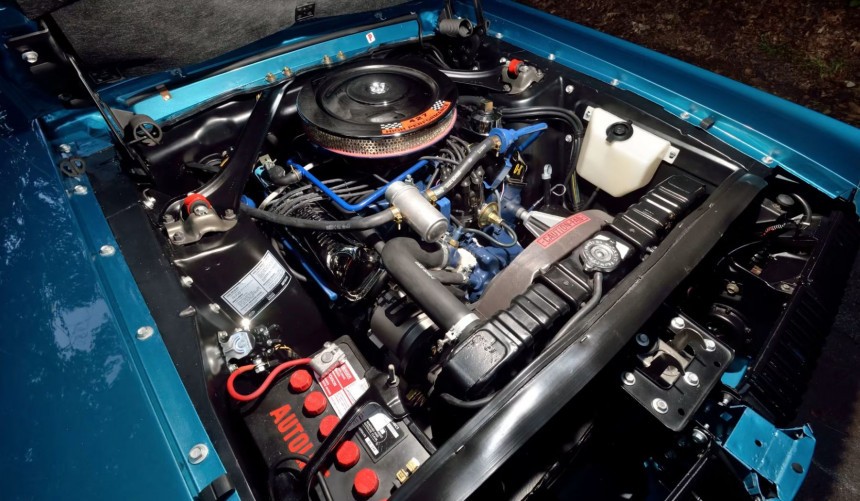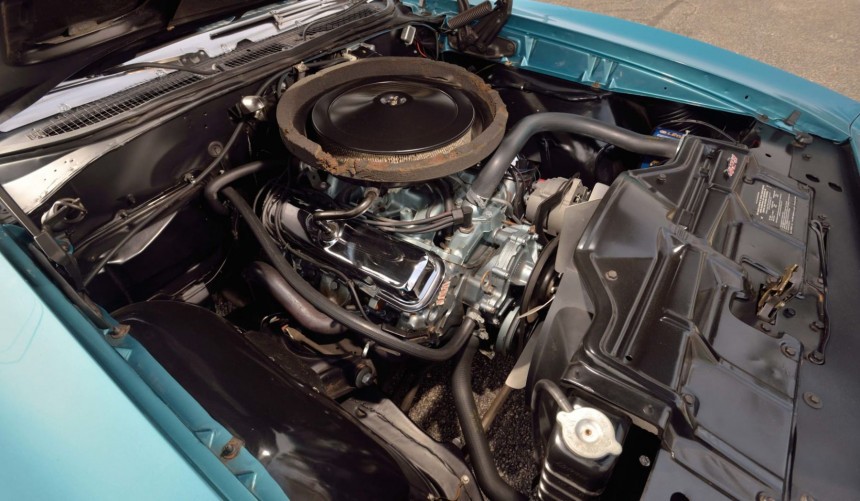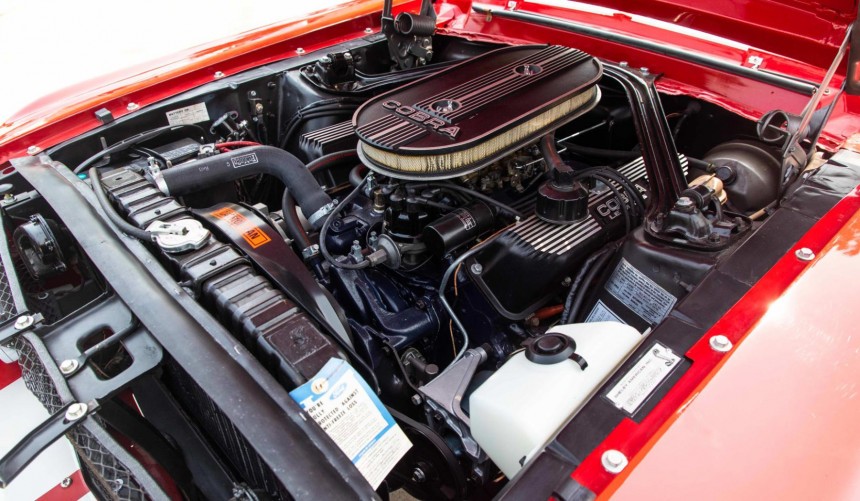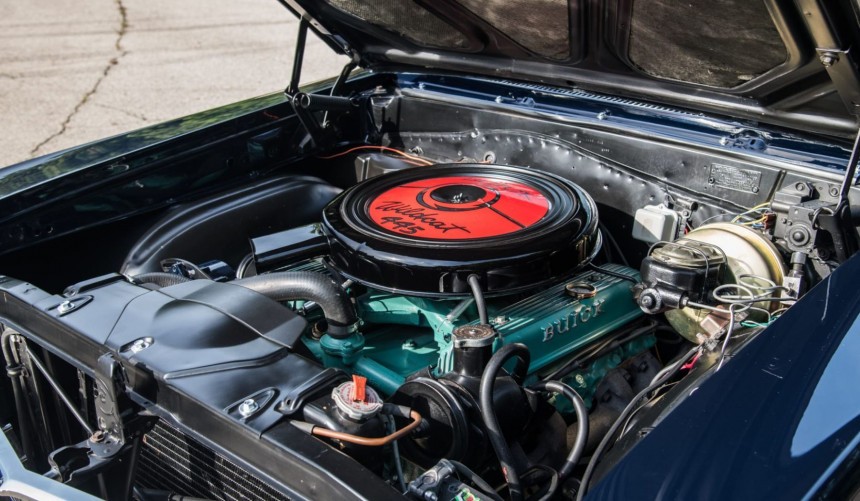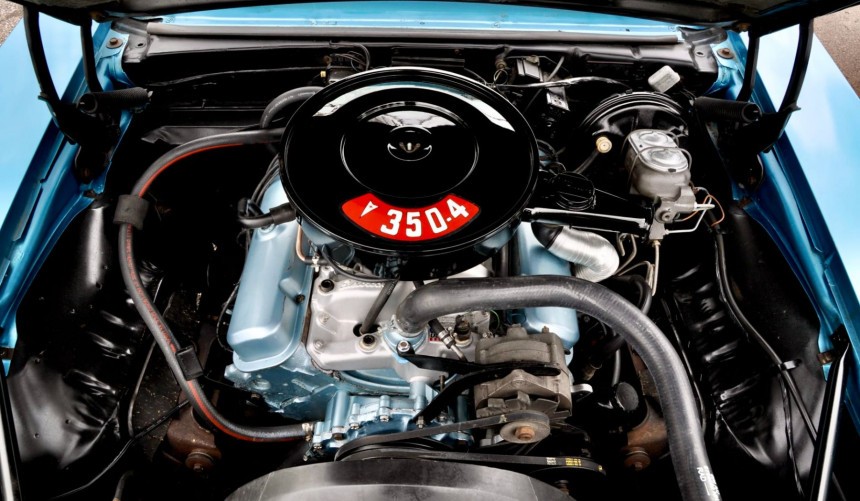During the 1960s and 1970s, American manufacturers were engaged in a fierce horsepower war that yielded some impressive V8s. However, some of those engines were advertised with more or less cubic inches than what they actually displaced.
While the V8 configuration was born in France, it found its greatest success across the Atlantic, on US shores, where it debuted in the mass-produced form in 1916, courtesy of Cadillac.
In the decades that followed, other carmakers followed suit, and by the 1960s, the V8 became as American as apple pie.
With Detroit's big three fighting for high-performance supremacy, V8s often took center stage in big-money marketing campaigns.
Today, it's a fact that many V8s from the golden age of muscle cars were purposefully underrated to dodge high insurance premiums, but what many enthusiasts still don't know is that some famous V8s were also advertised with displacements modified on paper.
Probably the most famous Blue Oval V8 of the era, the legendary 427 powered the Le Mans-conquering GT40, the NASCAR-winning Torino, and a series of street-legal muscle cars produced by Ford and Mercury.
Part of the FE series of big-block V8s, the 427 made its debut in road-worthy production form for the 1964 model year.
Equipped with either a single or a pair of four-barrel carbs, the mighty engine made 410 or 425 hp, respectively and was available until 1968.
It was available in several epic muscle cars, including the Cougar GT-E 7-Litre, the Galaxie 500, and the Cyclone.
However, while it was dubbed "427" because 7 liters (427 ci) was the displacement limit for several racing organizations at the time, the engine's true displacement was 425.98 ci (6.98 liters)
GM's excitement division during the 1960s and early 1970s, Pontiac, is credited with kickstarting the muscle car craze during the 1964 model year when it unleashed the GTO option for its LeMans intermediate.
Naturally, Pontiac was heavily involved in developing powerful V8s. Nevertheless, unlike their rivals, the division's eight cylinders weren't split between small and big blocks but rather small- and large-journal engines.
The first large-journal V8, the 421, appeared in 1961 as a dealer-installed Super Duty option, but by 1967, it had been enlarged to keep up with the demand for more performance.
Dubbed 427, the new mack daddy of the Pontiac V8 range initially made 360 standard horses or 376 hp in HO (High Output) guise.
A year later, those figures grew to 375 and 390 hp, while in 1969, the V8 was rated at either 370 or 390 hp.
Though it only came from the factory under the hood of Pontiac's full-size cars, some dealers, including Royal Pontiac, who offered the Bobcat conversion, equipped Firebirds and GTOs with this highly potent engine.
Marketed as the 428 to one-up Ford, the V8's real displacement was 426.61 cubic inches (6.99 liters).
The second member of the FE big-block family in this list, the 428 was introduced in 1966 as a more cost-effective and "streetable" alternative to the venerable 427.
Produced until the 1970s, the engine saw use in a variety of Ford, Mercury, and Shelby models, with several configurations being developed.
Unquestionably, the most famous 428s were the Cobra Jet and Super Cobra Jet versions that featured distinct performance-oriented upgrades.
Factory rated at 335 hp, these versions were rumored to make closer to the 400 hp mark. Nevertheless, on paper, the most powerful version of the 428 was the 360-hp unit that powered the 1968 Shelby GT500.
Like the iconic 427, the 428 had a slightly smaller displacement than advertised. That figure stood at 427.38 cubic inches (7.0 liters), but since Ford already had a 427, it was decided to call the newer engine "428."
After GM siblings Pontiac released the GTO in 1964, followed by Oldsomobile's 4-4-2 several months later, Buick decided to introduce its own high-performance A-body intermediate in 1965.
Launched as a performance package dubbed Gran Sport, it transformed the Skylark into a veritable tire shredder by adding a host of performance hardware, including a 401-ci (6.57-liter) V8.
Launched in 1959 and produced until 1966, the venerable "nailhead" engine was initially available only in full-size Buicks and advertised as a 401.
However, when the division decided to use it on its intermediate models, starting with the 1965 Gran Sport, it violated GM's self-imposed 400-ci displacement limit for the platform.
Rather than altering the engine, Buick chose to simply rate it at 400 ci in its intermediate models' literature.
As for advertisement, attention was drawn away from the displacement, with the engine being called Wildcat 445 - a figure highlighting its maximum torque output in pound-feet.
Pontiac makes a second appearance on this list with a less popular small-journal V8: the 350.
Introduced in 1968 and discontinued a decade later, the 350 was derived from the 389 and replaced the 326 as the standard V8 for Pontiac's intermediate and pony cars.
Throughout its lifespan, it powered modes like the Firebird, LeMans, Tempest, Catalina, or Grand Prix and was even available in the 1974 GTO.
The reliable engine was offered in either a standard two-barrel-carb version or a performance-oriented, four-barrel HO option that reached peak performance in 1969 when it was rated at 330 hp.
Though marketed as a 350, the small-journal V8's actually displacement was 353.8 cubic inches (5,798 liters), so it was really a 354.
In the decades that followed, other carmakers followed suit, and by the 1960s, the V8 became as American as apple pie.
With Detroit's big three fighting for high-performance supremacy, V8s often took center stage in big-money marketing campaigns.
Today, it's a fact that many V8s from the golden age of muscle cars were purposefully underrated to dodge high insurance premiums, but what many enthusiasts still don't know is that some famous V8s were also advertised with displacements modified on paper.
Ford 427
Part of the FE series of big-block V8s, the 427 made its debut in road-worthy production form for the 1964 model year.
Equipped with either a single or a pair of four-barrel carbs, the mighty engine made 410 or 425 hp, respectively and was available until 1968.
It was available in several epic muscle cars, including the Cougar GT-E 7-Litre, the Galaxie 500, and the Cyclone.
However, while it was dubbed "427" because 7 liters (427 ci) was the displacement limit for several racing organizations at the time, the engine's true displacement was 425.98 ci (6.98 liters)
Pontiac 428
Naturally, Pontiac was heavily involved in developing powerful V8s. Nevertheless, unlike their rivals, the division's eight cylinders weren't split between small and big blocks but rather small- and large-journal engines.
The first large-journal V8, the 421, appeared in 1961 as a dealer-installed Super Duty option, but by 1967, it had been enlarged to keep up with the demand for more performance.
Dubbed 427, the new mack daddy of the Pontiac V8 range initially made 360 standard horses or 376 hp in HO (High Output) guise.
A year later, those figures grew to 375 and 390 hp, while in 1969, the V8 was rated at either 370 or 390 hp.
Though it only came from the factory under the hood of Pontiac's full-size cars, some dealers, including Royal Pontiac, who offered the Bobcat conversion, equipped Firebirds and GTOs with this highly potent engine.
Marketed as the 428 to one-up Ford, the V8's real displacement was 426.61 cubic inches (6.99 liters).
Ford 428
Produced until the 1970s, the engine saw use in a variety of Ford, Mercury, and Shelby models, with several configurations being developed.
Unquestionably, the most famous 428s were the Cobra Jet and Super Cobra Jet versions that featured distinct performance-oriented upgrades.
Factory rated at 335 hp, these versions were rumored to make closer to the 400 hp mark. Nevertheless, on paper, the most powerful version of the 428 was the 360-hp unit that powered the 1968 Shelby GT500.
Like the iconic 427, the 428 had a slightly smaller displacement than advertised. That figure stood at 427.38 cubic inches (7.0 liters), but since Ford already had a 427, it was decided to call the newer engine "428."
Buick "Nailhead" 400 (Skylark Grand Sport)
Launched as a performance package dubbed Gran Sport, it transformed the Skylark into a veritable tire shredder by adding a host of performance hardware, including a 401-ci (6.57-liter) V8.
Launched in 1959 and produced until 1966, the venerable "nailhead" engine was initially available only in full-size Buicks and advertised as a 401.
However, when the division decided to use it on its intermediate models, starting with the 1965 Gran Sport, it violated GM's self-imposed 400-ci displacement limit for the platform.
Rather than altering the engine, Buick chose to simply rate it at 400 ci in its intermediate models' literature.
As for advertisement, attention was drawn away from the displacement, with the engine being called Wildcat 445 - a figure highlighting its maximum torque output in pound-feet.
Pontiac 350
Introduced in 1968 and discontinued a decade later, the 350 was derived from the 389 and replaced the 326 as the standard V8 for Pontiac's intermediate and pony cars.
Throughout its lifespan, it powered modes like the Firebird, LeMans, Tempest, Catalina, or Grand Prix and was even available in the 1974 GTO.
The reliable engine was offered in either a standard two-barrel-carb version or a performance-oriented, four-barrel HO option that reached peak performance in 1969 when it was rated at 330 hp.
Though marketed as a 350, the small-journal V8's actually displacement was 353.8 cubic inches (5,798 liters), so it was really a 354.
